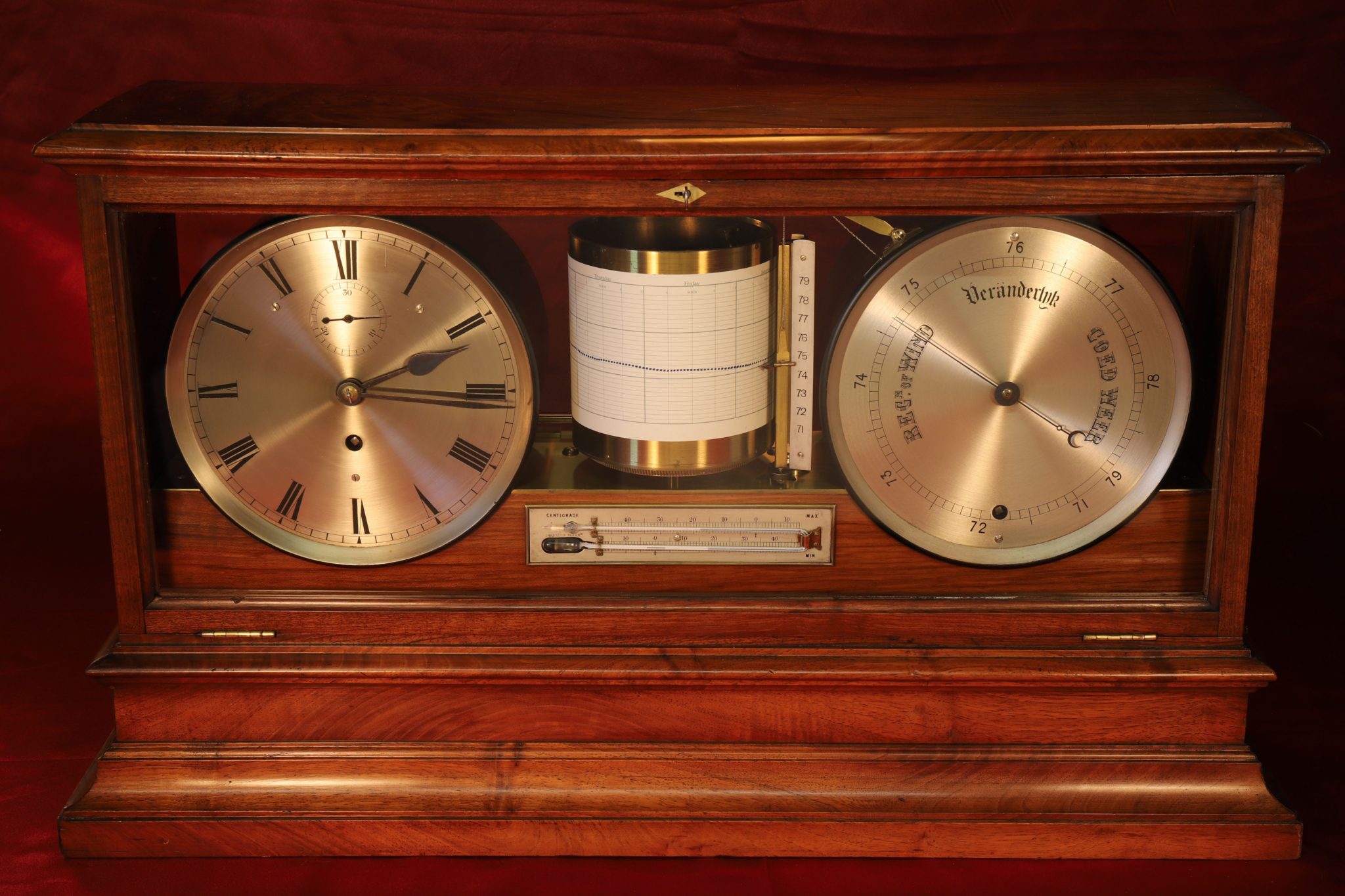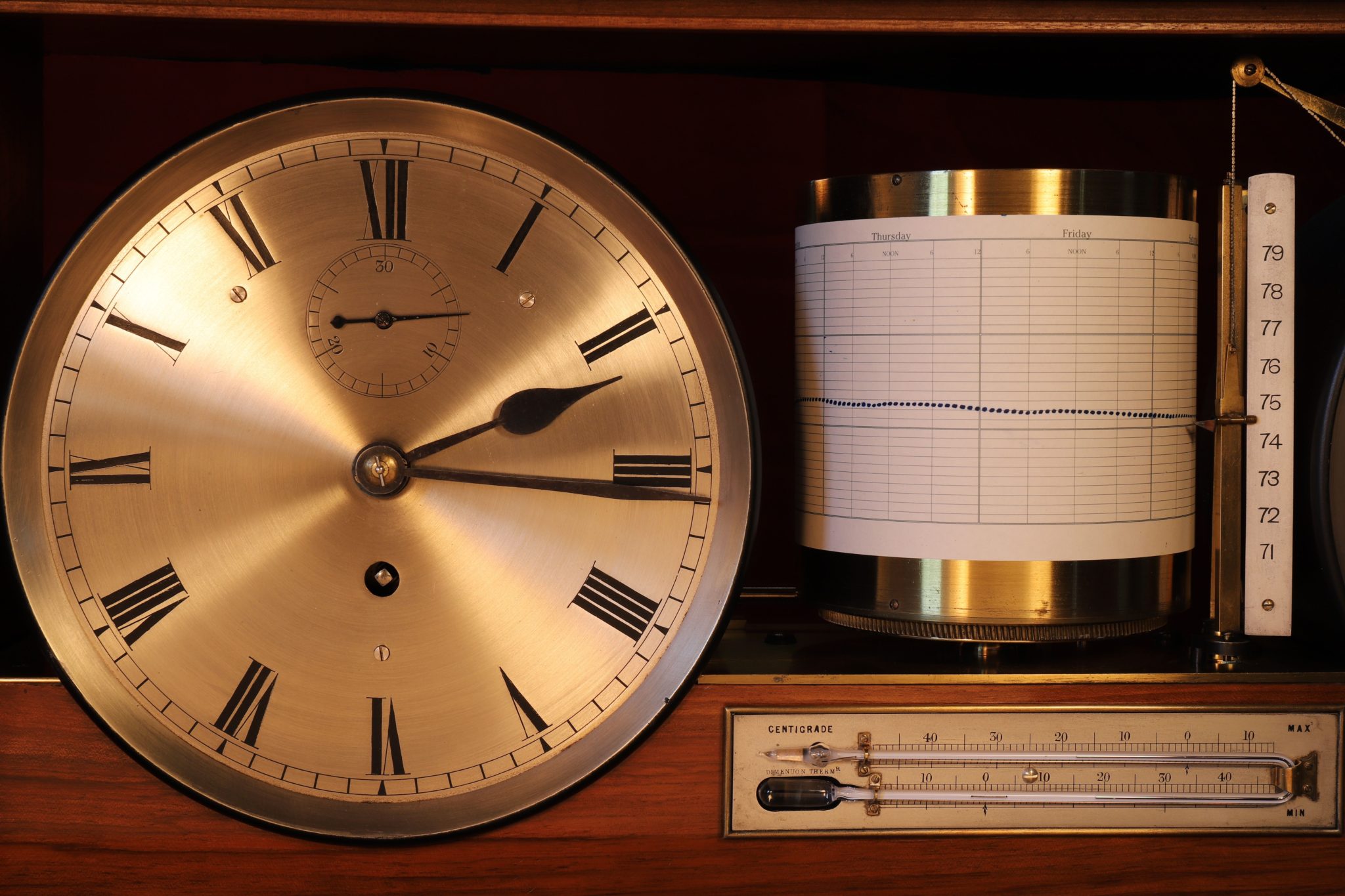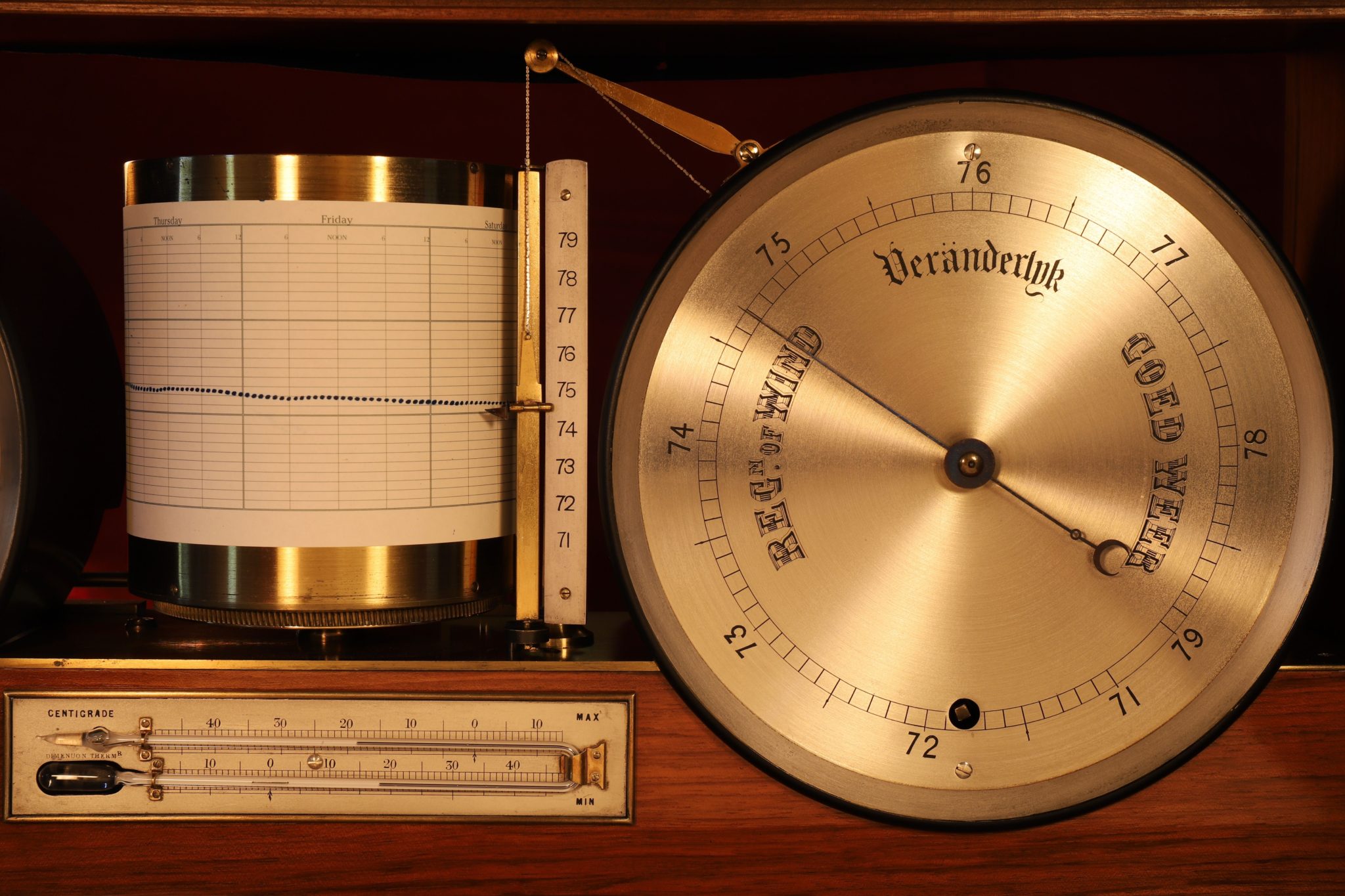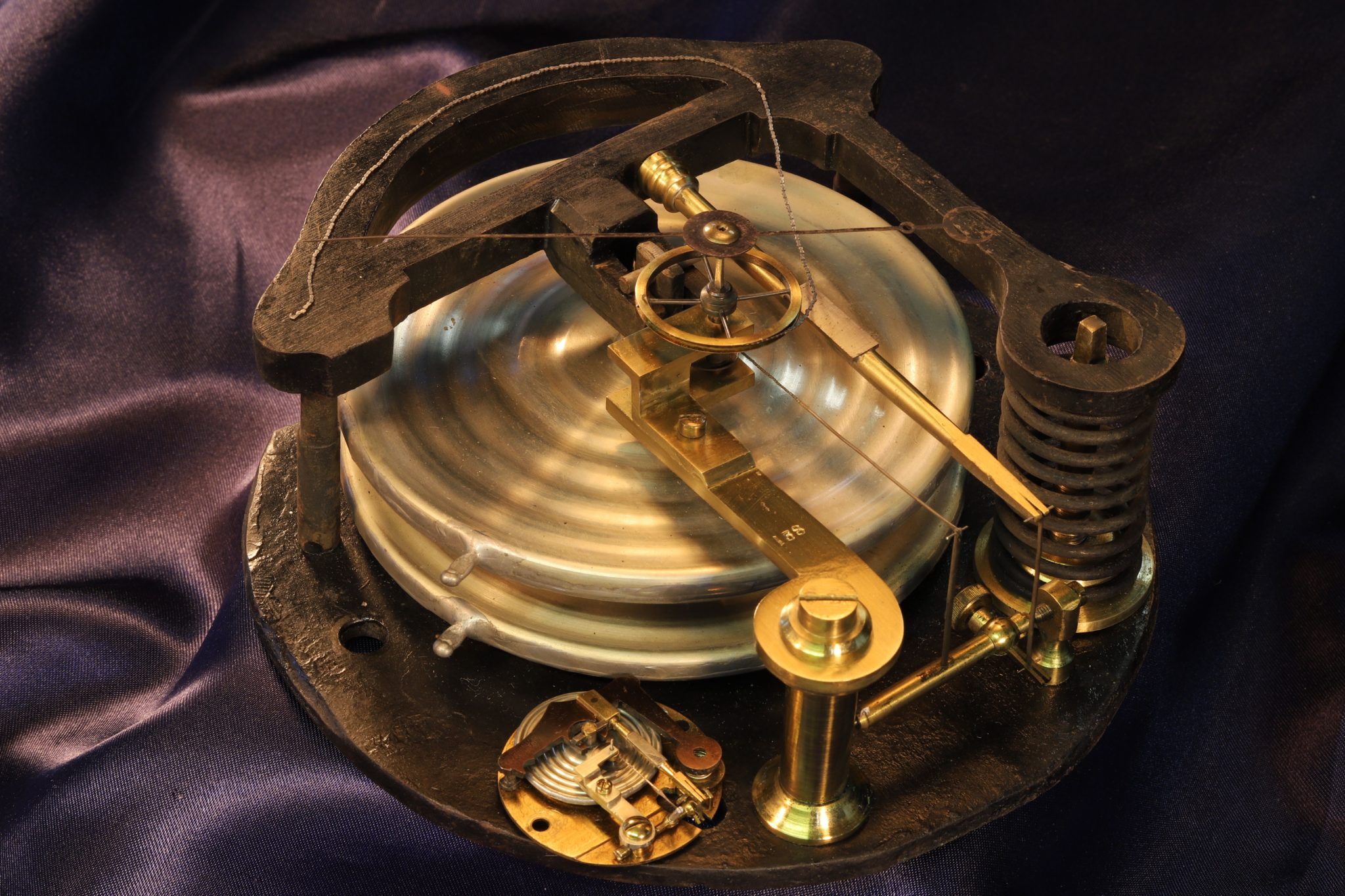A good walnut cased weather station comprising single train fusee eight day clock, twin capsule barometer, drum recorder & max/min thermometer, c1878
A substantial weather station constructed principally in lacquered brass, the clock with grained silvered 8” dial and roman chapter ring, winding square, subsidiary 30 second dial, blued steel pear hands, eight day single chain fusee movement with pendulum having regulation adjustment, dead beat escapement, mechanically linked to the drum recorder, chart marker and barometer progress hammer. The 4¾” diameter drum recorder moved at the base by a clock-driven helical gear acting on a circumferential gear at the drum base, spring loaded chart clips, the chart marking mechanism comprising a vertical guide bar with sliding marker carriage raised and lowered on a fusee chain driven from the barometer arbour, associated barometric scale calibrated in centimetres of mercury and mounted upon spring steel leaves to the top and bottom, the whole being caused by the clock to rotate through 30 degrees bringing the marker into contact with the chart at hourly intervals. The barometer with grained and silvered 8” dial, calibrated in centimetres of mercury with a range from 71 – 79, standard meteorological terms in Dutch: “Regen of Wind” (Rain or Wind), “Veranderlyk” (Change) and “Goed Weer” (Good Weather), compensation adjustment square, blued steel pointer. Massive twin capsule driven movement of conventional coil spring design, struck with the number “183” (pocket barometer movement shown in image below for comparison purposes). The case with oblong slot accommodating the arbour driven fusee running on a pulley positioned on a crane. Timber base chassis with lacquered brass facings. The lower front with maximum/minimum thermometer, silvered register calibrated in degrees Fahrenheit with range from -20 – 50.
The whole contained within a highly figured walnut case, glazed drop-down front with lock and key, brass escutcheon. The rear backboards with opening door affording access to the clock. The entire mechanism retained in the case on two side mounted screws which, when removed, allows the mechanism to be withdrawn to the rear.
These instruments mostly follow a close pattern, and two distinct sizes may be encountered – this is the large version. Essentially the clock drives three systems, the drum continuously, the barometer progression hammer three times each hour, in the 4th quarter or on the hour, the marker system is brought to the chart. Timing of these operations is critical since the mechanical effort required for each is reasonably high. The complication in marking charts creates friction for the barometer, thus an arrangement driven by the clock causes a hammer to strike the coil spring – this ensures the barometer and marker pen follow any changes in barometric pressure. It is noteworthy that the standard type of barograph mechanism might have been easier to engineer.
Some weather stations are marked to the dials by makers and some retailers, others are apparently unattributed. It would appear reasonable to suggest that the vast majority emanate from a single source, probably acquiring the clock and barometer from different suppliers – in this case, the barometer is almost certainly the work of Callaghan. The constructor then bringing the various outsourced parts together, making modifications to the clock, manufacturing the drum, marking system, barometer progression mechanism and bespoke timber case. In any event, these were extremely expensive instruments, the domain of the very rich, companies and corporations. As such, demand would have been very modest, the possibility that several companies manufactured the same item so strikingly similar in most characteristics remote indeed.
The marking system originally was achieved using special paper easily marked by a bright brass pen housed in the sliding carrier. The original paper charts are now obsolete so an alternative had to be found without altering the originality of the instrument. Trials with graphite were largely unsatisfactory so a modified barograph knib cut to precisely the correct size was proffered – this modification produces a clearly marked chart with good reliability, and charts of the right dimensions and compatible with barograph ink are available. The images here show such a chart marked with this newly developed pen.
For all their complication, these are magnificent instruments. This example has the advantage that it works well, the clock keeping very good time, the barometer responding well to pressure changes, clock and barometer with attendant mechanisms serviced and set up. The backboards replaced.
Housed within a very attractive walnut case, this weather station has wonderful aesthetics, and is an interesting commentary on the late Victorian age.
Dimensions: 26″ wide x 16″ high x 8″ deep
Stock No: BG0510
Price: SOLD




